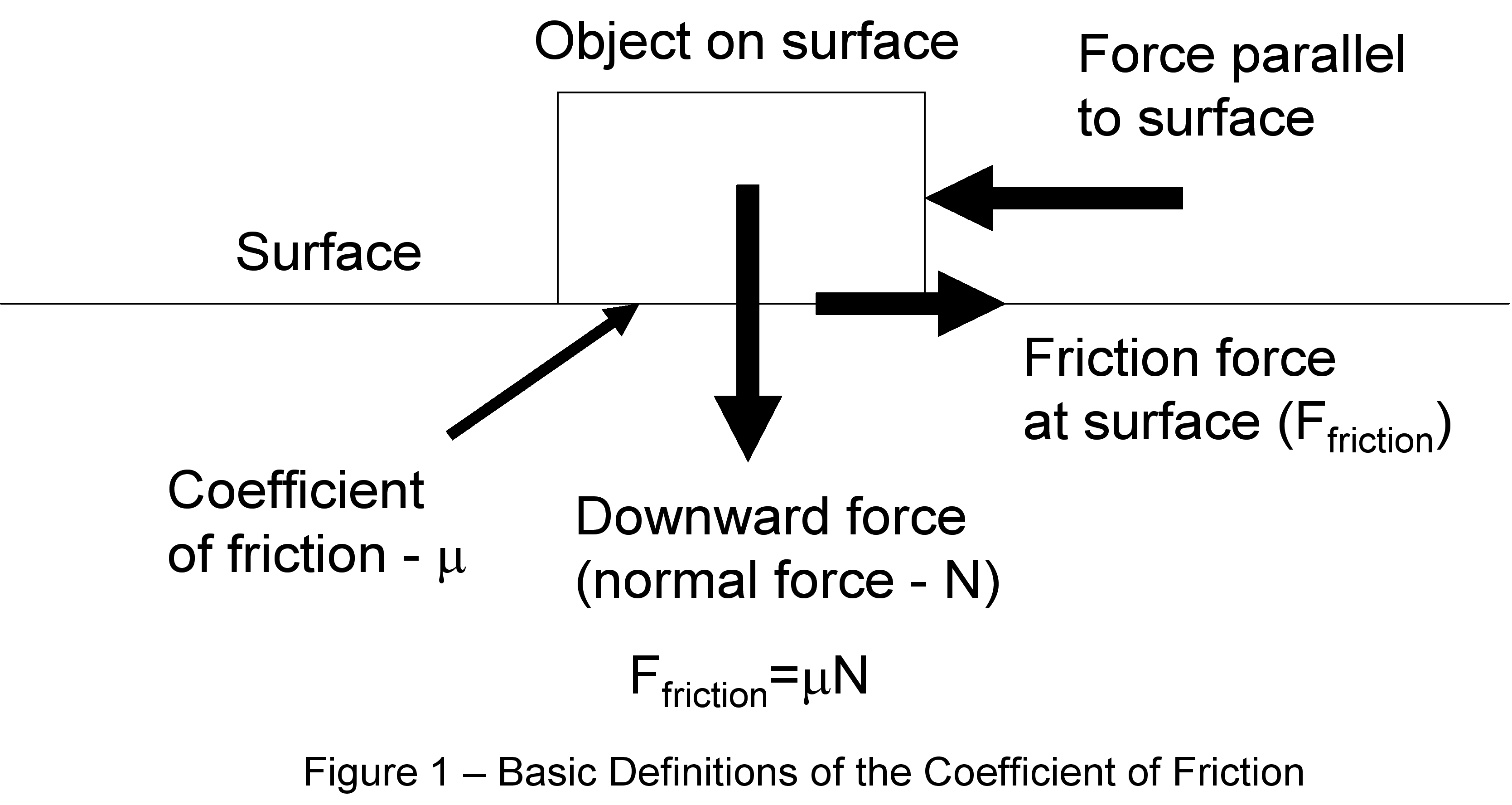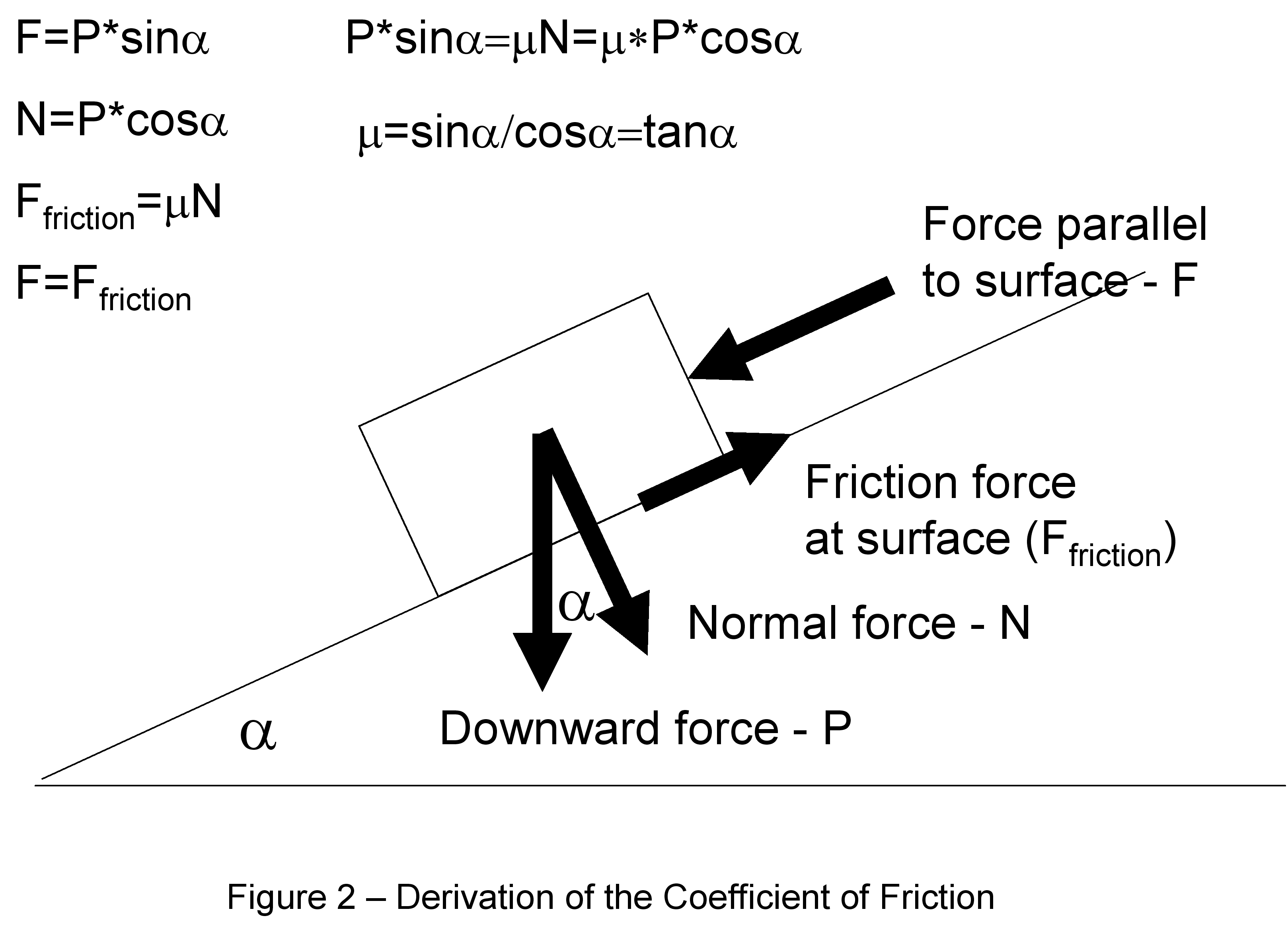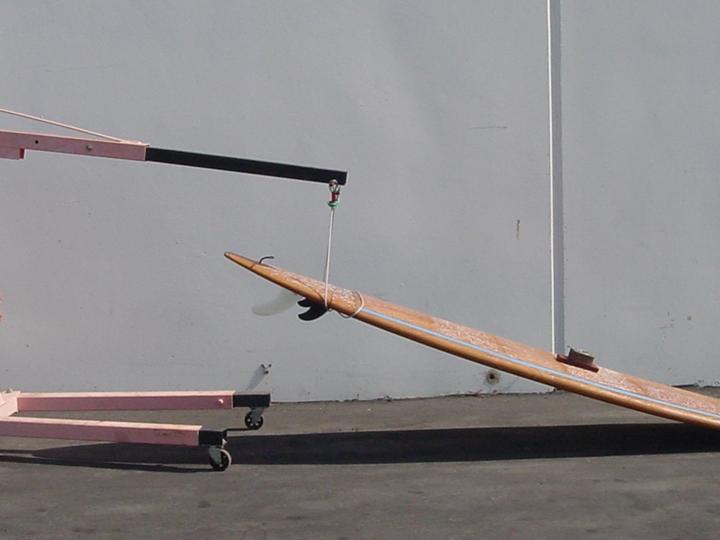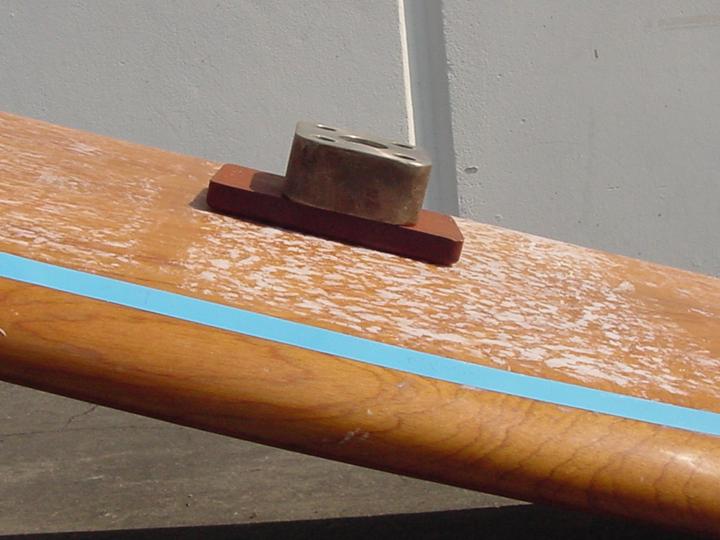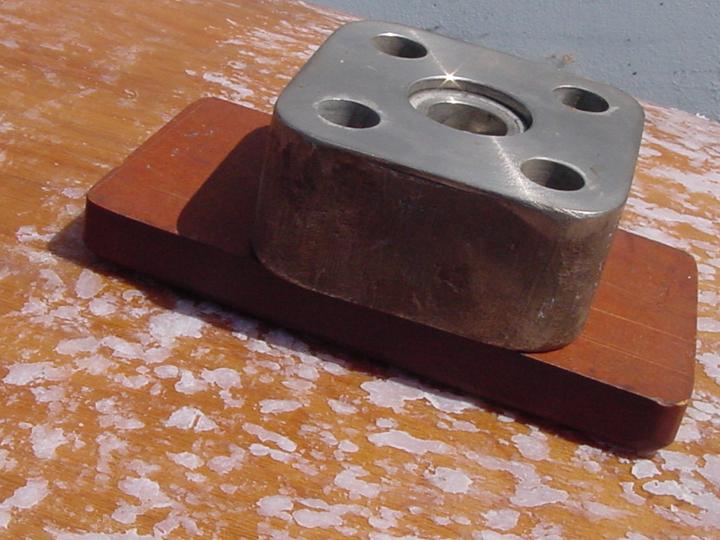Surfwax Friction
Surf Wax Stiction |
|---|
|
Friction is the physical description of the force exerted between two surfaces in contact with each other. In the example of surf wax, when you press onto the board you body applies a force onto the surface of the board. This force has two parts, there is a force into the surface (called the normal force) and then there is another force parallel to the surface of the board. Figure 1 shows this behavior. Friction comes in with the parallel force. A frictional force is created at the surface of your body and the board which is equal to force that say, your foot imparts to the board. This frictional force is equal to the "Coefficient of Friction" times the normal force. Rather confusing at first, but important in that the frictional force is very dependent on the coefficient of friction for any given normal force. Note that when you are standing upright, the normal force is essentially how much you weigh, so your only hope for more friction is: 1) get heavier, or 2) increase the coefficient of friction. When wax makers claim they are "sticky" that's what they are saying, that their wax has a higher coefficient of friction. Of course there are many other features to wax as well, such as durability, ease of application, whether you got it for free, etc...., but in terms of functionality, stickiness and the coefficient of friction are pretty much the same. Note that wax deforms pretty easily and in the classic sense friction is hard to quantify, but for fun let's assume that the classic description of friction is somewhat valid. One can measure the coefficient of friction with a simple test. I set-up a simple test to start quantifying how sticky various waxes are. The test set-up is pretty simple and you can do this yourself at home. This might make a fun science project for someone in school. I found at least one person who has conducted a surf wax friction comparison test as a school project. So far I have found that you need to do LOTS of tests because of the inherent variability of wax friction. Note that friction coefficients are typically like this. Surf wax friction tests seems especially difficult to measure. Before I show you my test apparatus, we need to do some physics to figure out how to solve for the coefficient of friction. A surfing friend of mine once commented something to the effect that geometry was fairly useless. Here is a case where it is not useless. The method to determine the coefficient of friction is basically a geometric proof. The idea is to use some physics to draw a free body diagram, manipulate some force vectors and derive an equation that quantify the effect of friction. Figure 2 shows the free body diagram, various geometry relationships and the force vectors. One can find this derivation in most college freshman physics texts and some high school sources. The punch line is: The tangent of the angle of inclination is the coefficient of friction. The trick to this exercise is knowing that the angles shown in the figure are the same which is a geometric proof for similar triangles. This would be something done in high school geometry, though it is a bit confusing and I commonly forget the proof. Now I have just memorized that it works. Anyhow, some geometry allows us to do a simple test and calculate the coefficient of friction by raising an inclined plane and watching something slip down. So how do I use that information. Now we get to the test set-up. See figure 3 for my test set-up. In this figure I have a surfboard which has been waxed. I actually waxed it with different waxes in different locations so I can test various waxes together for comparison. I have attached a shop crane to the tail of the board, so I can slowly raise the board at an angle from horizontal. I place a small board to simulate a hand or foot onto the board and then apply a weight onto the foot simulator. I then begin raising the tail of the board slowly and watch the foot simulator until I see it begin to move. Once it begins to move, I stop raising the board and I measure the angle the board makes with the floor. The tangent of this angle is the coefficient of friction. Normally the coefficient of friction is constant, which means its value is the same no matter how large the normal force is. These means that the frictional force increases the harder I press down on a surface and that the increase in frictional force is proportional to the applied load. Surf wax is not like this. I have found that the coefficient of friction is also dependent on the normal force, which is not typical for most materials. The coefficient of friction of surf wax DECREASES as the applied load is increases. This means that wax is stickier when you touch it (a small applied or normal force), than when you applied a hard force (like standing up). As is well known, wax deforms slightly when pressed on, which shows that the wax is plastically yielding or flowing under high applied loads. The coefficient of friction will change if the wax deforms and this test data shows that. Of course, it will also be dependent on the temperature, so one should measure that as well. The variation of the results varies a fair amount from test to test, so for each test condition, I like to repeat the exact same test conditions at least three tests with the foot simulator being placed at different locations on the board. The important feature to remember is that the stickiness of wax when you touch it is not the same stickiness you will get when you really need it. I tested several different brands of surf wax at roughly 60-70 degrees F. The waxes were selected as the best fit for that temperature. I was surprised to see that there was quite a bit of difference between brands. I am not showing any brand names, but anecdotally, I have heard surfers claim that what I have found to be a less least sticky wax is actually the strongest and stickiest. Of course the actual ocean is different than my test, so preference of use may not be so easy to "test" like this. However, the basic trends I have found seem reasonable. I will be doing further tests in the future and will update this data. Figure 4 shows the current test data. Note that the normal force is shown as "normal stress". This is the normal force divided by the contact area of the foot simulator and board. A "normal stress" is similar to pressure. I assumed that the wax may be undergoing local compressive failure at the contact location and based on general material failure theory suggests that one needs to measure this applied stress. Based on that theory, I am assuming that the data would fit better using a stress rather than a normal force. Seems a little more complicated than necessary, but it will help when I do further work in the future. What you see is that all waxes seem to obey the same the general behavior. As the applied load increases, the coefficient of friction decreases. In fact the coefficient of friction more than drops in half at higher loads. My highest load is roughly equivalent to a 100 pound person standing upright on a board. The variation of the coefficient of friction is large. the Brand 1 coefficient is higher than Brands 2 and 3 which are almost identical. I would expect that as the temperature varies that for any given wax there will be an optimal temperature which will yield the maximum stickiness. This will require a more temperature controlled experiment, such as enclosing the surfboard test apparatus in a temperature controlled chamber. These tests were also done "dry", so other tests with water could be performed as well. Figure 1 - Nomenclature for Friction Forces
Figure 3 - Example of Surf Wax Friction Test Set-Up Figure 4 - Comparison of Several Surf Waxes |

Copyright (c) 2006 Ventura Enterprises. All rights reserved.






